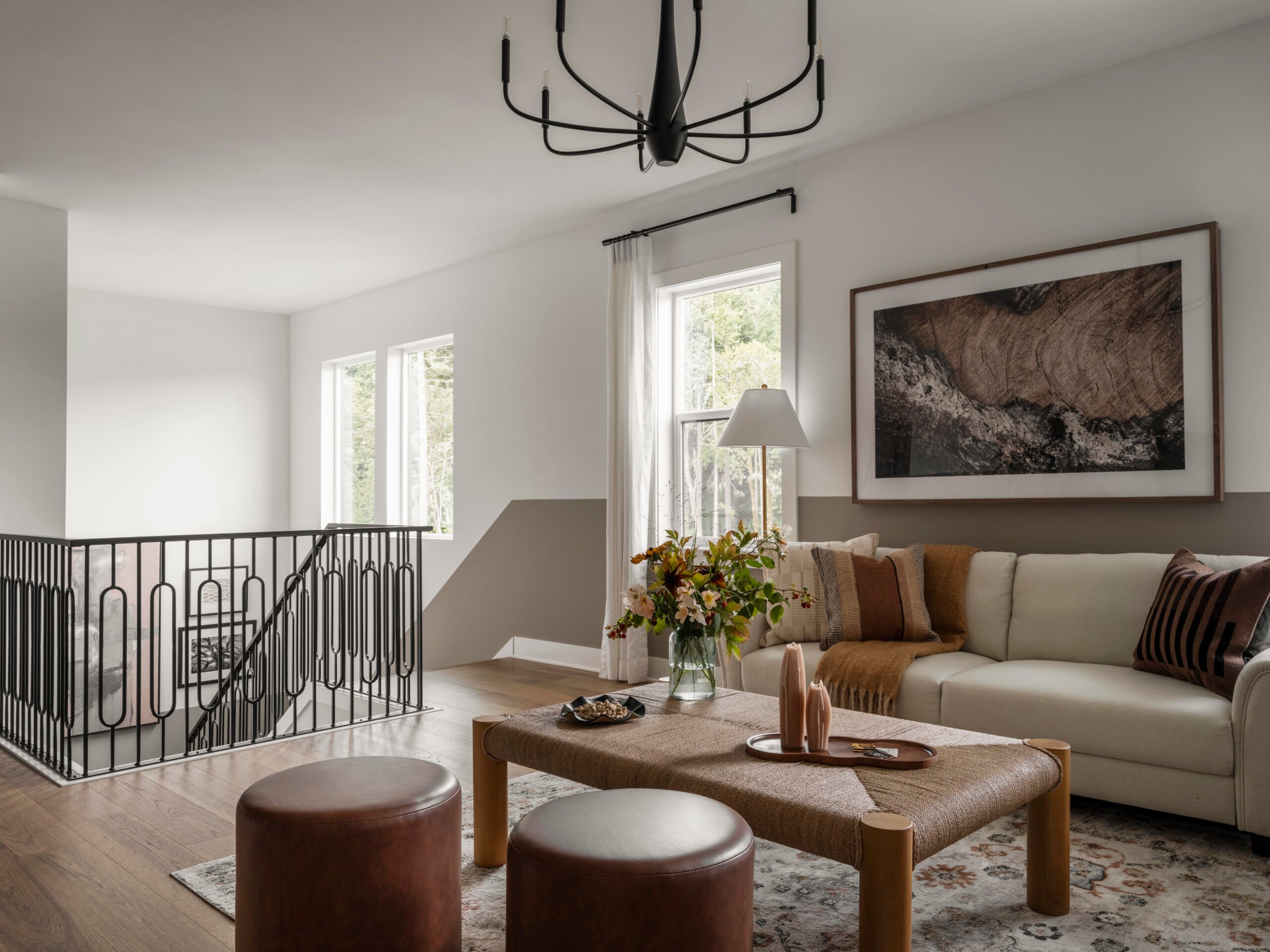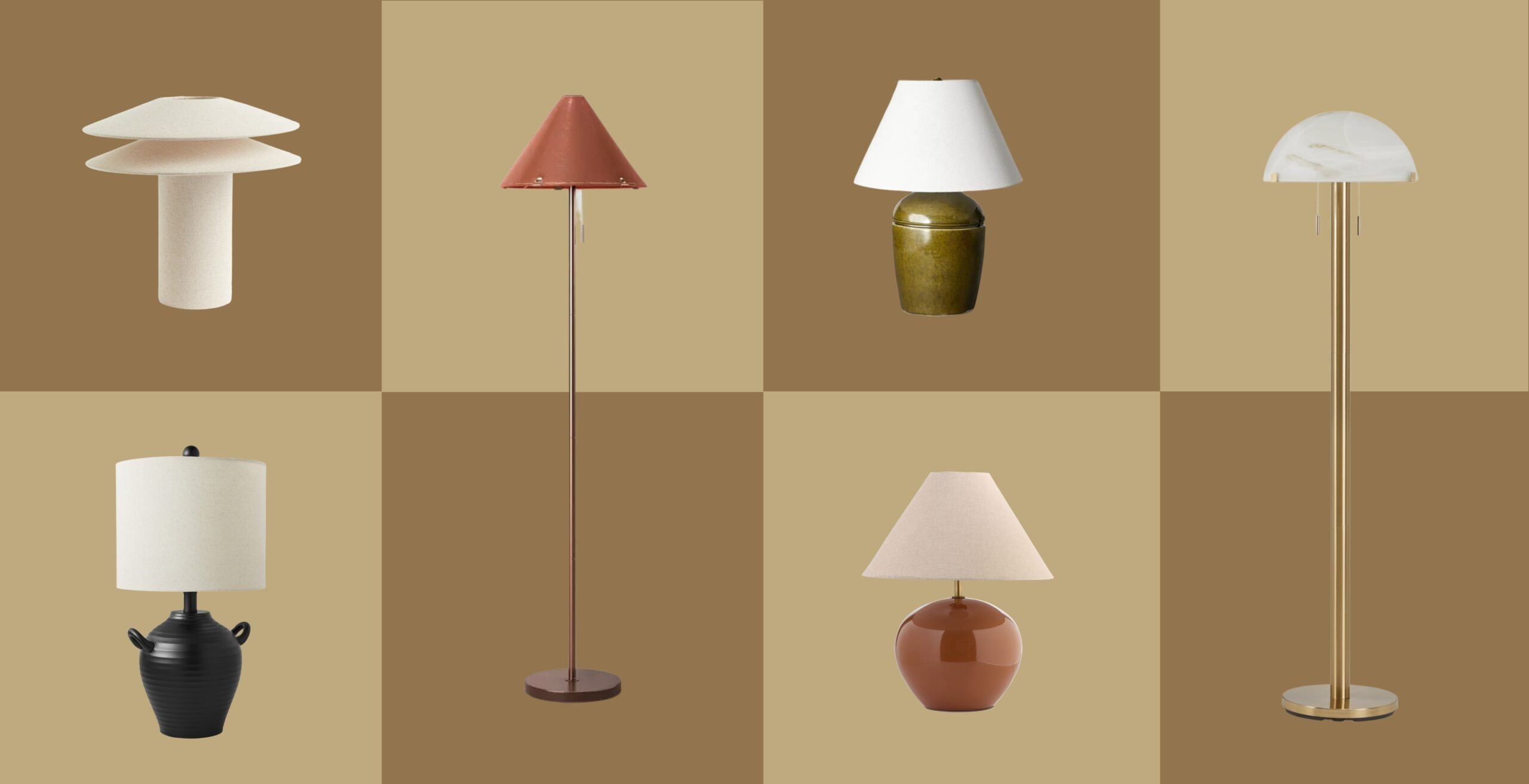The Complete Guide To Hanging Lighting
The easiest way to see your space in a whole new light? Updating your lighting. But besides choosing the ideal pendant or chandelier for a room, it’s just as important to know how it should be hung. The correct height can make a fixture a whole lot more functional (and prevent any heads from bumping into it). So let us show you how to handle it – with our guide to hanging lighting the right way.
We’ve had lots of experience hanging lighting in all sorts of different spaces, from living rooms with soaring ceilings, to cramped kitchens. But no matter the room (or ceiling height), there are plenty of tips we’ve learned along the way. And we’re here to share them all with you – and make the process of hanging lighting much easier. Keep scrolling to see our handy visual guides for hanging lighting in your kitchen, dining room, and living room. And Click Here to watch Bobby show you how to easily change out a light fixture.

Guide To Hanging Lighting
Kitchen Lighting
Properly illuminating your kitchen is essential for creating a functional space. (You def need light to actually see what you’re cooking!) So when hanging pendants, it’s important to keep function at the forefront. Here are some of our top tips for getting it right.
- THE IDEAL HEIGHT
Hang lighting with at least 30″ – 36″ between the bottom of a fixture and the top of a counter. This will provide enough room for you to work, without your head awkwardly running into any lighting.
- CONSIDER SCALE
The larger your kitchen (and island), the larger your pendants can be. Kitchens with higher ceilings can also accommodate fixtures that have a larger or heavier visual feel.
- KEEP THINGS CENTERED
Lighting should be centered on an island or counter, and not extend past the edge

Guide To Hanging Lighting
Dining Room Lighting
Lighting in your dining room can make a very stylish statement. But if it’s not hung correctly, it could be all fashion and no function. So be sure to follow this advice when you’re ready to hang.
- THE IDEAL HEIGHT
Just like your kitchen lighting, dining room lighting should be hung with at least 30″ – 36″ between the bottom of a fixture and the tabletop.
- CONSIDER YOUR TABLE SHAPE
For a foolproof way to choose a chandelier, just look at the shape of your dining table. A rectangular chandelier will work well for a rectangular table and a round chandelier for a round table.
- KEEP THINGS CENTERED
If your junction box (where your lighting connects to power in the ceiling) is not perfectly centered over your dining table, you can easily swag your fixture instead of calling an electrician. It just involves screwing a large hook into the ceiling and “swagging” the chain so the light is properly centered. Check out the easy guide to doing it Here.

Guide To Hanging Lighting
Living Room Lighting
A chandelier can be a lovely addition to a living room. And for it to really shine brightly, you’ll want to make sure it’s in proportion to the size of the room and other furnishings. Here are a few other suggestions you want to keep in mind as well.
- THE IDEAL HEIGHT
You’ll want to leave a minimum of at least 7′ of clearance below a chandelier (for someone to comfortably walk underneath it). But if you have a ceiling higher than 8′, you can increase the height by 3″ for each additional foot.
- CONSIDER THE SIZE OF THE ROOM
For rooms smaller than 10’ x 10’ feet, choose a chandelier that is 17” to 20” wide. For rooms about 12’ x 12’, choose a chandelier that is 22” to 27” wide for proper scale.
- THINK ABOUT THE OTHER ELEMENTS
When choosing a chandelier, think about what it will be in front of when you look into your living room. If it will hang in front of a mantel with a busy piece of art or a tall set of styled bookshelves, you may want to consider a more simplified design that won’t compete. If the sightline is less busy, a more intricate design would work well.







